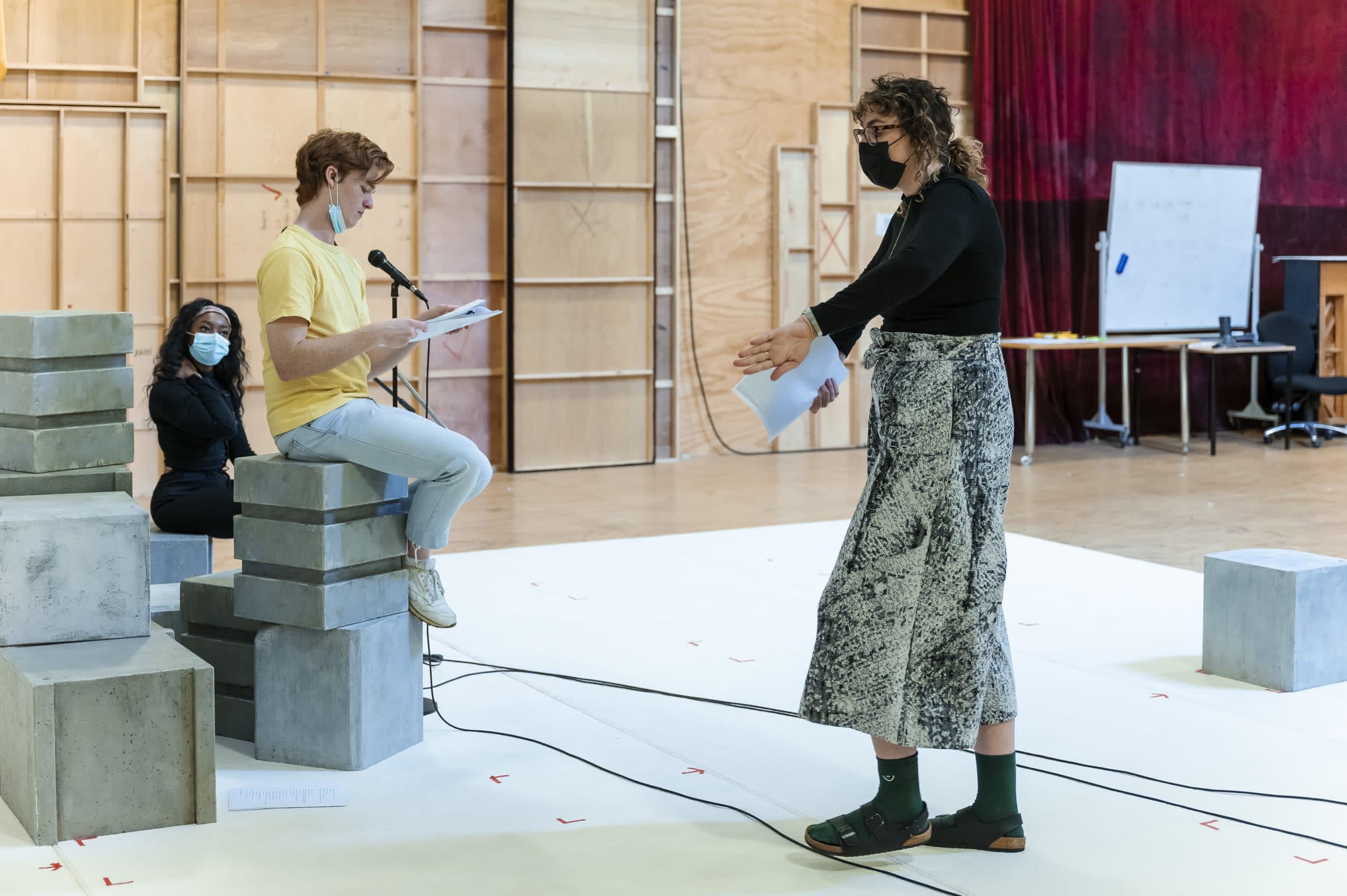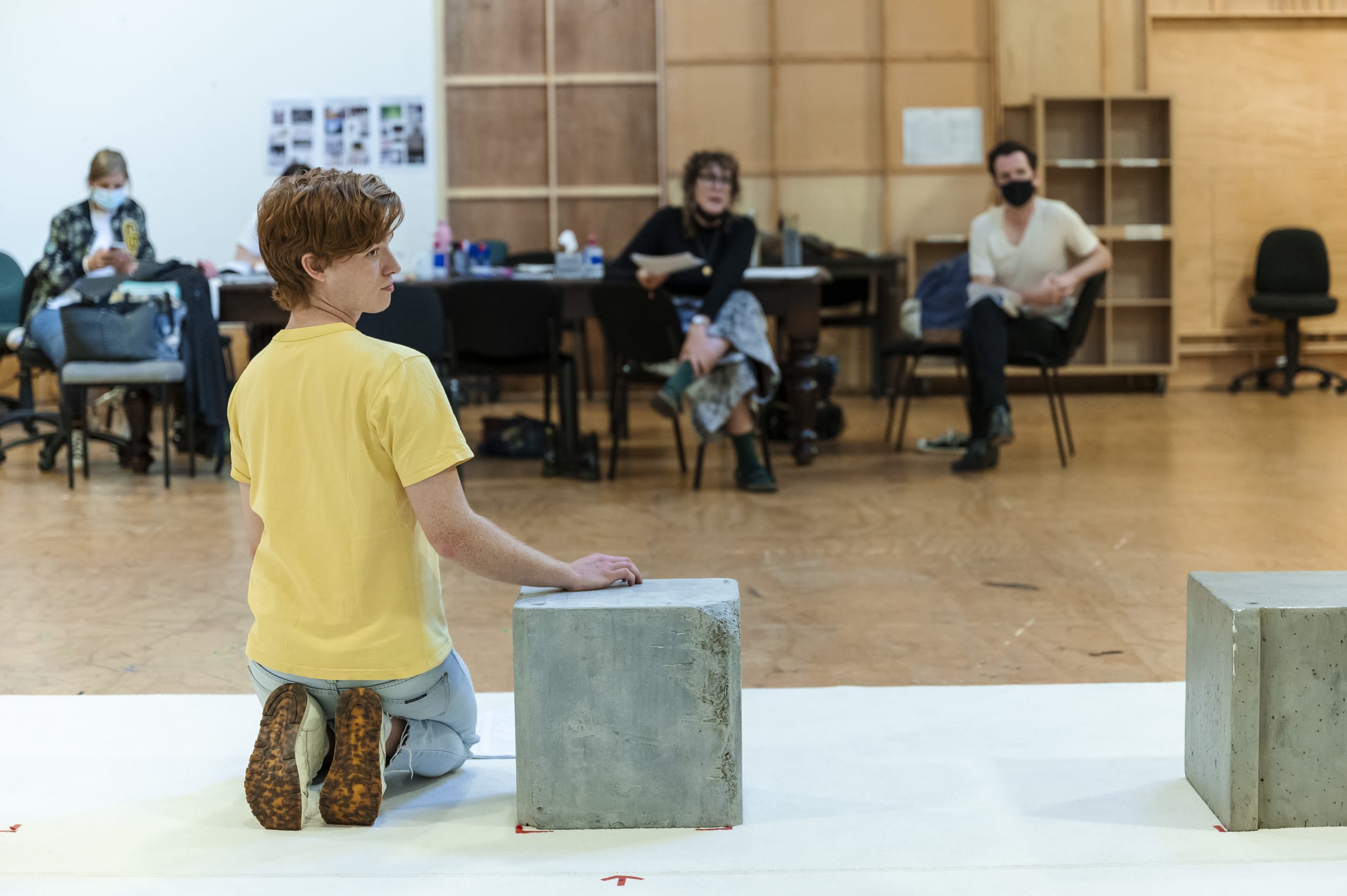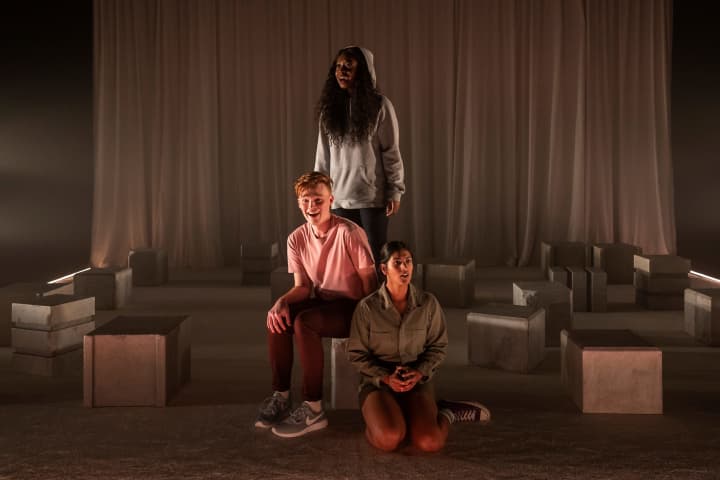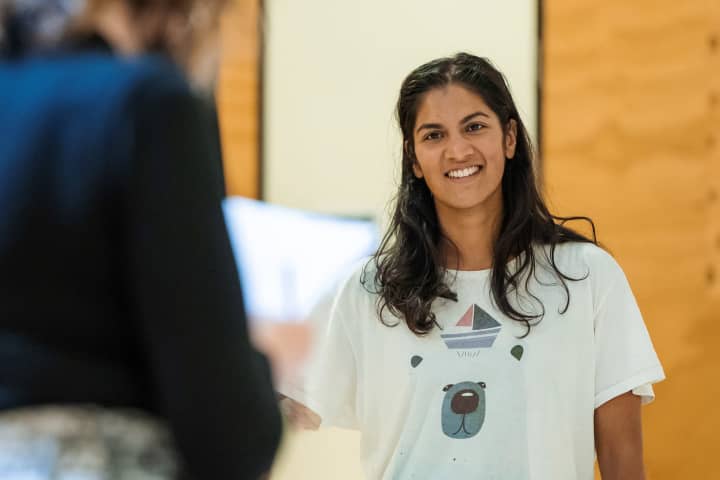We chat to Conor Leach during rehearsals for SLAP. BANG. KISS. about Laban's efforts, costumes and how physical intention can unlock character.
What is SLAP. BANG. KISS. about, in your own words?
SLAP. BANG. KISS. is about three teenagers who each spark a movement, through activism that is sometimes deliberate, sometimes accidental and sometimes a bit of both. It explores how people can galvanise one another, the blurring of personal and political actions, and what it means to be platformed as a young person today. The play demands that we hold on to hope, and that we never underestimate young people.
Tell us about your central character in a nutshell. What drives them?
Darby's a 16-year-old boy from a country town. He identifies as gay and experiences violent homophobia almost daily. And he LOVES another boy at school, Daniel Koh (much as he denies it to his bestie, Jasmine). In an extraordinary act, he's invited Daniel to try to break the world record for longest kiss with him.
Darby's of course driven by love – first love, at that – but he also needs to love and be loved openly and safely, without fear. He says he wants the kiss to be 'special,' but I think he also wants it to be an act of defiance. Darby's negotiating conflicting missions within a precarious context: his wish to make a public declaration and his need to stay safe.
How do you embody your central character?
A go-to technique for me is the Laban efforts. Rudolf Laban was an Austro-Hungarian choreographer who broke movement down into eight 'efforts', each with its own direction, strength, speed and flow. A punch, for example, is direct, strong, quick and bound. A flick is indirect, light, quick and free. You can lend these to a character to find qualities of movement, gestures and habits. I've been exploring a flick and a glide (direct, light, sustained, free) for Darby; the glide seemed right as an embodiment of his love, and the flick because he's always alert for danger.
When starting on a character, I love practising the text on my own in really exaggerated ways using these efforts, 'gliding' and 'flicking' with my voice and body on each line. Through this, I found some key gestures emerged for Darby – lots of hand wringing and holding my hands on my hips in moments of tension, for example. This way of working also allowed me to find an inner tempo for him, which is quite rapid. In the moment of performance, however, it's important to throw that work away and trust that it's in your body – you don't want to be controlling or exaggerating your movement at all, but instead allowing for whatever happens in the moment.
 Tsungirai Wachenuka, Conor Leach and Katy Maudlin. Photo: Tiffany Garvie
Tsungirai Wachenuka, Conor Leach and Katy Maudlin. Photo: Tiffany Garvie
How do you transform into other characters, or to other places? Could you give one example?
I think one precise change of physical intention can unlock a different character for you, and often reads better for an audience. Michael Chekhov's acting technique deals a lot with a character's physical centre of energy – the main three being head, heart and core. Of course we're a combination of all three, but working from whichever is dominant can help you find a character. For example, whereas Darby's definitely a heart centre, just above the solar plexus, when playing the official I imagine my core as my centre. Carl, in the cupboard with Sofia, is a head centre – always thinking, alert. I find as the official I take up more space, have a wider base and stand taller, whereas with Carl my shoulders rise and the tempo of my movement and speech increases. I like this way of working because it's holistic and doesn't feel like I'm 'doing a voice.' It feels more like activating different possibilities of myself.
How do design elements like costumes, props and the set impact your performance? What helps and how?
I always find costume very useful as a springboard of sorts into a character. Putting it on activates my imagination I think – it just shifts my focus into the story. With each piece of costume, I like to build an imagined history – where I got it, how long I've had it, how often I wear it, etc. Contextual work like that can be useful for investing in the reality onstage.
With such an abstract set, we have to endow the objects around us, like the blocks and flags. The architecture of the blocks in Darby's world is different to Immi's world, for example. My relationship to space is different as Augie versus the peacekeepers. The nature of the set demands that we be specific with what's around us. If we don't know where we are, the audience won't. Likewise, we use the flags as many different objects – in their literal sense, but also as a banner, a baton, materials for Sofia's march. There's a momentum to how we introduce the flags into the space and how they transform the world of the piece. That all helps with revving us up towards the climax of the show.
Being on the blocks also brings an element of exposedness, vulnerability. As Darby, I'm on a block about 80 per cent of the time. Being placed on that pedestal does create for me a sense of being in a heightened, extraordinary moment, something completely beyond Darby's everyday life.
 Conor Leach. Photo: Tiffany Garvie
Conor Leach. Photo: Tiffany Garvie
How have you been exploring contrast in rehearsal?
We most immediately explore contrast between the bodies and voices of the characters we play. It's really thrilling to quickly move from little Finn to the official, for example – two vastly different physicalities. I place Finn's energy and voice in my head, whereas the official's energy is in the core and my voice drops down into my chest.
I've also been exploring contrast in terms of how I interact with the audience versus with other characters. Darby has different relationships with Jasmine, with Daniel and with the audience – he wants different things from each of them. I think finding those contrasting intentions clarifies the story and includes the audience in a particular way.
I've also tried to find light and shade in terms of what Darby's experiencing in his world. I always find the scenes sing a bit more if, before talking to the audience, I vividly see and hear what's going on around me – the darkness of the carpark, the car speeding towards us, people trying to access the trolleys. Experiencing these different images, with their own sizes, textures and meanings, hopefully creates contrast in my delivery, in terms of rhythm, tempo and vocal quality.
SLAP. BANG. KISS. is on stage at Southbank Theatre, the Lawler 19–30 April before embarking on a regional tour. Learn more.
Published on 8 April 2022





